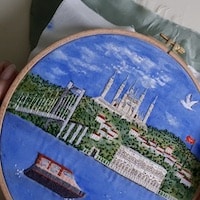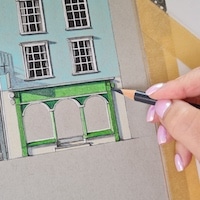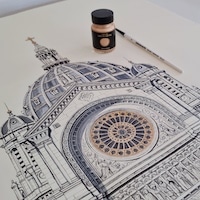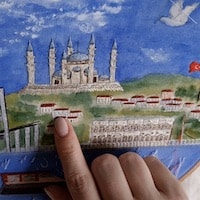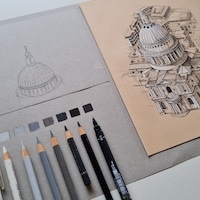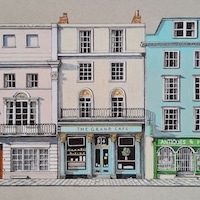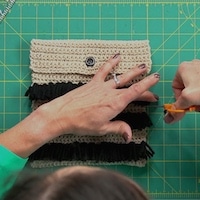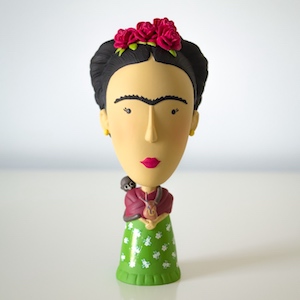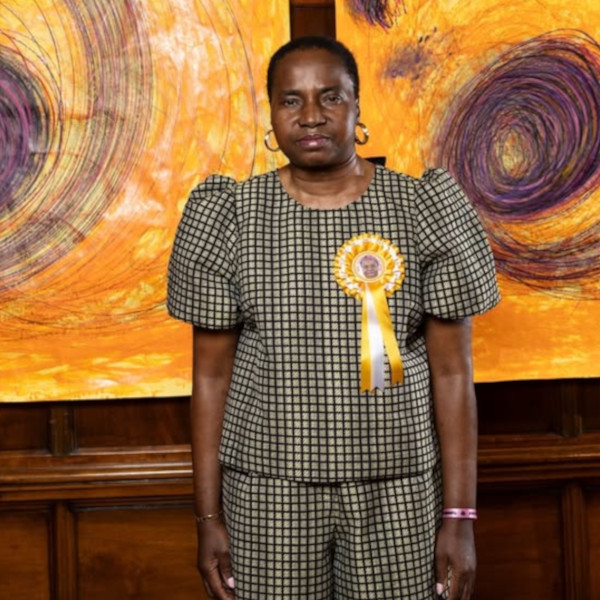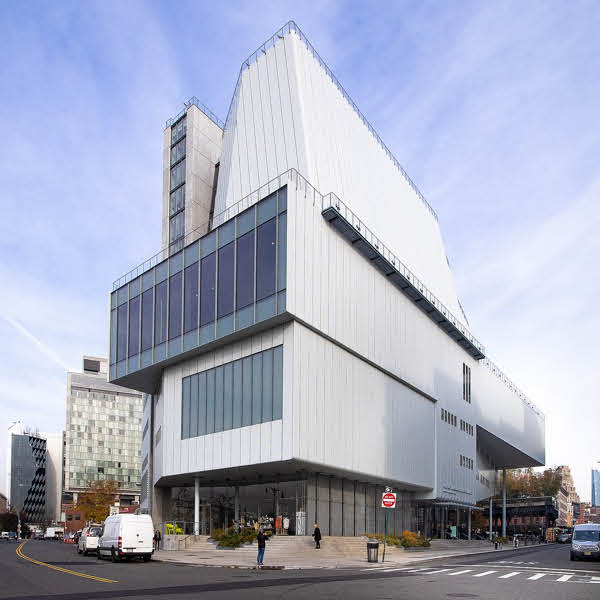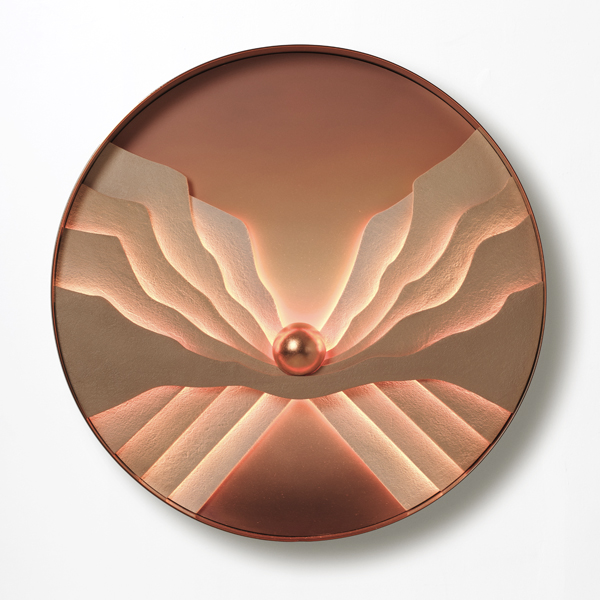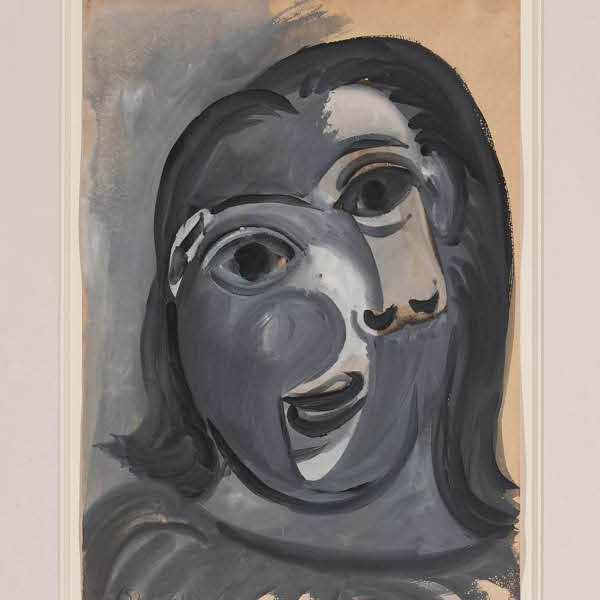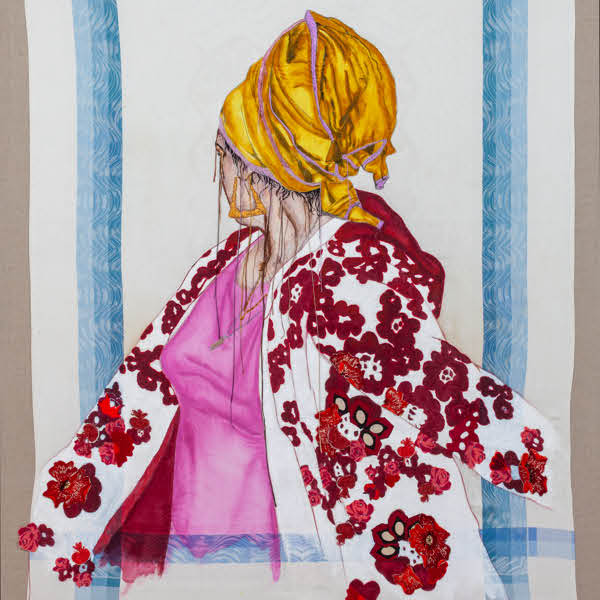
Força Aérea Rebelde (Rebel Air Force), Ralph Ziman, Inkjet on Moab Entrada Paper, 43 x 62.5 in
South African artist Ralph Ziman has seen the consequences of conflict first hand. Marked by the experience of growing up in the days of Apartheid, he traded a prolific career as a commercial photographer for a platform to address this dark period in history and elevate the heritage that was endangered during this era. His latest endeavor, The MiG-21 Project, sees him transforming a decommissioned fighter jet into a breathtaking example of African beadwork.
“By repurposing symbols of violence into icons of peace, I use art as a way to come to terms with my own past,” Ziman says via a statement. “My work is a colorful reimagining of what I encountered, as well as a call for change.” The artist describes Apartheid as a time of bigotry, a time when the government exploited divides and turned people against each other. “It was a time when the police became highly militarized and violent,” he explains. “My art tells of that history because I see aspects of it repeating itself around the world.”
The MiG-21 Project is the final part of a larger effort titled Weapons of Mass Production Trilogy. The three parts are woven together by the mission to redefine and reframe physical symbols of violence through beadwork. First was the The AK-47 Project, in which Ziman and a team of artisans built an AK-47 out of beads. Then, for The Casspir Project, Ziman took an 11-ton Casspir armored police vehicle from the Apartheid era and covered it in colorful patterns. With the The MiG-21 Project, Ziman goes even bigger, taking over a 51-foot by 24-foot decommissioned Cold War era, Soviet-designed fighter jet.
“The aim of The MiG-21 Project is to take the most mass-produced supersonic fighter aircraft and to turn it from a machine of war into something that looks beautiful and changes the meaning of it,” explains Ziman. Not only does the artist change the impression one gets from an aircraft previously associated with bloody conflicts, but he also offers a space for reflection and healing while calling out the militarization of police forces around the world.
At the heart of the project is the collaboration with local artisans, whose beadwork is a form of art perfected by Indigenous Southern African creators over many centuries. “It was really looked down upon,” Ziman recalls about the perception of this craft. “People would say it’s made for tourists—it’s rubbish. I always felt it was given short shrift, because the amount of skill and talent to do the beadwork is just phenomenal.” For the Weapons of Mass Production Trilogy, the artist aims to elevate beadwork to a higher art form. “We’re going to make things out of beads that’s going to take people’s breath away, ” Ziman assures.
The MiG-21 Project will make its debut at The Museum of Flight in Seattle, where it will be on view from June 21, 2025 through January 26, 2026. In addition to the jet, the exhibit will also feature Afrofuturistic flight suits designed and crafted by the artist and his team of artisans, as well as new materials that detail the history of MiG-21 aircrafts in the the Cold War, further contextualizing the importance of this undertaking.
To stay up to date with the artist, follow Ralph Ziman on Instagram.
South African artist Ralph Ziman transformed a decommissioned fighter jet into a breathtaking example of African beadwork.

Força Aérea Nacional de Libertação (National Liberation Air Force), Ralph Ziman, Inkjet on Moab Entrada Paper, 43 x 56 in
“By repurposing symbols of violence into icons of peace, I use art as a way to come to terms with my own past,” Ziman says.

Hero Of Cuito Cuanavale, Ralph Ziman, Inkjet on Moab Entrada Paper, 43 x 56 in
The MiG-21 Project is the final part of a larger effort titled Weapons of Mass Production Trilogy.

Detail of bedazzled cockpit attitude indicator // Paul Duran-Lemos

The Raider and Her MiG-21, Ralph Ziman, Inkjet on Moab Entrada Paper, 43 x 56 in
“The aim of The MiG-21 Project is to take the most mass-produced supersonic fighter aircraft and to turn it from a machine of war into something that looks beautiful and changes the meaning of it.”

Detail of the cockpit and flight stick replaced with a lowrider style steering wheel // Paul Duran-Lemos
The artist's work manages to change the purpose of a fighter jet and offer a space for reflection and healing at the same time.

MiG prep for photo shoot // Mauricio Hoyos
At the heart of the project is the collaboration with local artisans, whose beadwork is a form of art perfected by Indigenous Southern African creators over many centuries.

The embellished cockpit showing old school lowrider style upholstered seat // Paul Duran-Lemos
With the Weapons of Mass Production Trilogy, the artist aims to elevate beadwork to a higher art form.

Detail of MiG and canopy // Mauricio Hoyos
“We’re going to make things out of beads that’s going to take people’s breath away.”

Lighting for photo shoot // Mauricio Hoyos
The MiG-21 Project will make its debut at The Museum of Flight in Seattle, where it will be on view from from June 21, 2025 through January 26, 2026.

Detail of afterburner // Mauricio Hoyos






























